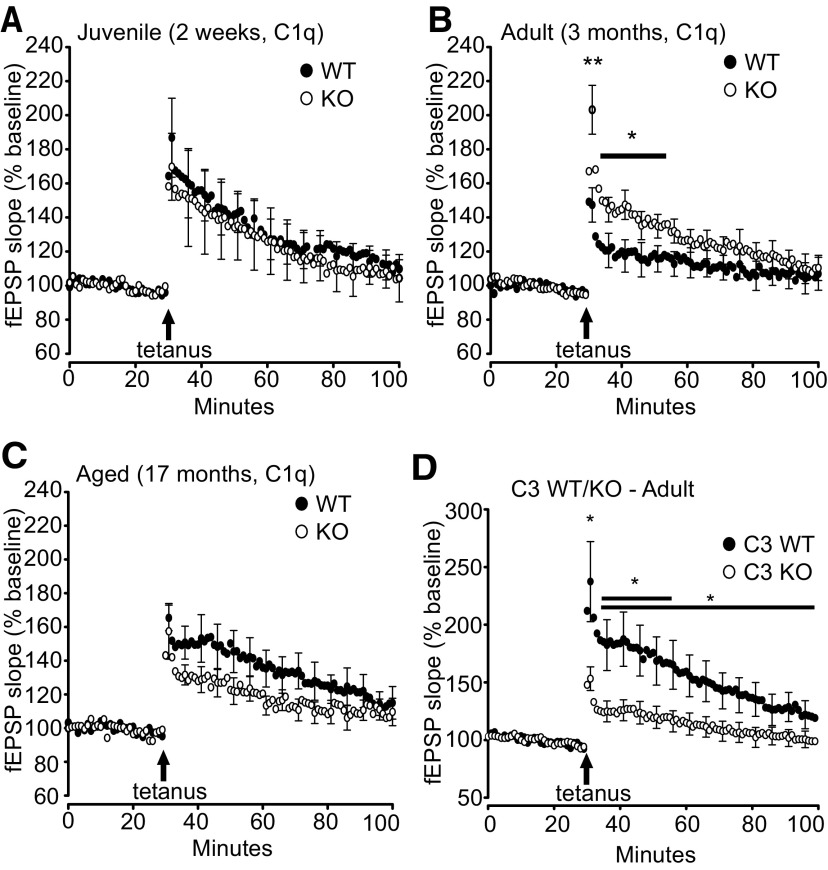Figure 8.
C1q-deficiency enhances activity-dependent synaptic potentiation in the adult, whereas C3-deficiency reduces activity-dependent synaptic potentiation. A–C, Analysis of synaptic potentiation in the ML of juvenile (A; P14–P17), adult (B; 3-month-old) and aged (C; 17-month-old) C1q-deficient (KO) versusWT littermate mice. A, No difference between KO and WT were detected in juvenile mice as synaptic potentiation after tetanic stimulation (p = 0.867) was similar between KO and WT mice. B, Adult KO mice showed enhancements in both PTP and subsequent potentiation when compared with the WT (PTP, p = 0.008; potentiation after PTP decay, 5–10 min after tetanus, p = 0.049; potentiation was significantly different for the time-span from 3 to 20 min post-tetanus, indicated by the bar in the graph, p = 0.049). C, No difference between KO and WT were detected in aged mice as synaptic potentiation after tetanic stimulation (PTP, p = 0.671, and later potentiation, p = 0.205) were similar between KO and WT mice. D, Adult C3-deficient mice (C3 KO) showed an opposing effect to the adult C1q KO (B), with reduced PTP and subsequent potentiation when compared with the C3 wild-type littermates (C3 WT; PTP, p = 0.038; potentiation after PTP decay, 5–10 min after tetanus, p = 0.027; potentiation was significantly different for the entire post-tetanus time-span (p = 0.044), including the time-span from 3 to 20 min post-tetanus (p = 0.029). Each data point presented represents 1 min averages of four individual fEPSPs taken at 15 s intervals. We did not detect any significant differences between baseline fEPSPs recorded before the tetanic stimulation. Juvenile C1q: n = 6 WT, n = 6 C1q KO littermates; adult C1q: n = 10 WT, n = 12 C1q KO littermates; aged C1q: n = 13 WT, n = 11 C1q KO littermates; adult C3: n = 14 WT, n = 13 C1q KO littermates. Values and error bars represent mean ± SEM. *p < 0.05, **p < 0.01.

